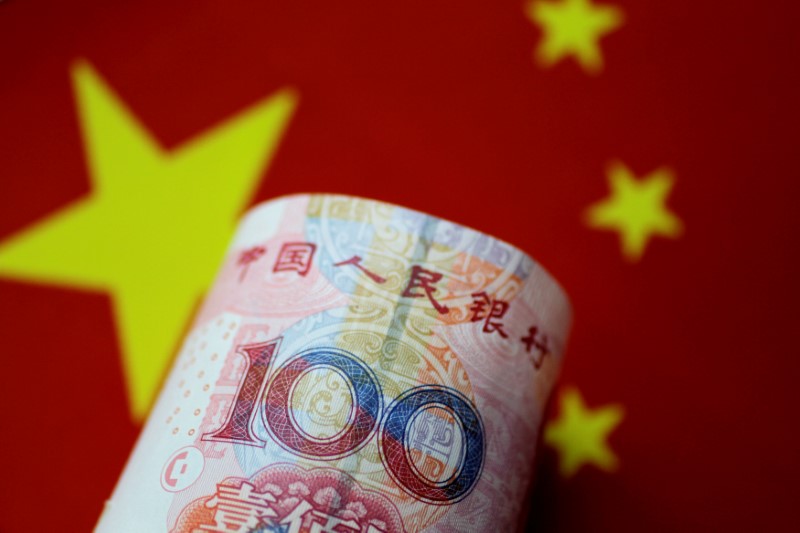Investing.com - China’s onshore and offshore yuan pared back steep losses against the dollar on Monday, after comments by U.S. President Donald Trump eased some fears over the latest escalation in the trade war between the world’s two largest economies.
Trump said Beijing had contacted U.S. trade officials overnight to say they wanted to return to the negotiating table, but China’s foreign ministry subsequently said it was not aware of any U.S. - China phone calls.
Markets took Trump’s comments as a positive sign for chances for de-escalation after both sides announced additional tariffs on each other's goods over the weekend.
Earlier Monday, Chinese Vice Premier Liu He said that China is willing to resolve its trade dispute with the U.S. through "calm" negotiations and resolutely opposes the escalation of the conflict.
At the G7 meeting in France over the weekend, Trump caused some confusion by indicating he may have had second thoughts on the tariffs, but the White House later clarified that the president’s only regret was not increasing tariffs more than he had already.
Trump is now set to hold a joint news conference with French President Emmanuel Macron later on Monday.
The latest trade escalation overshadowed a pledge by Federal Reserve Chair Jerome Powell to "act as appropriate" to keep the U.S. economy healthy, although he stopped short of committing to rapid-fire rate cuts.
The markets clearly believe the Fed will have to act more aggressively and are fully priced for at least a quarter-point cut in September and more than 120 basis points of easing by the end of 2020.
The dollar rose 0.3% against the yen to 105.7 by 04:07 AM ET (08:07 GMT) after reaching an overnight low of 104.47, the weakest level since January.
The Turkish lira briefly tumbled to 6.47 overnight in what market watchers described as a "flash crash", before pulling back to stand at 5.8160 against the dollar.
The U.S. dollar index against a basket of currencies was up 0.2% at 97.79 having bounced from 97.52.
The euro was down 0.24% to 1.1115, having climbed 0.6% on Friday, although restrained somewhat by speculation the European Central Bank will also have to ease aggressively next month.
The Australian dollar, a liquid proxy for risk, was a touch lower at 0.6747. An overnight low of 0.6689 was within a whisker of a recent decade-low of 0.6677.
The New Zealand dollar hit an overnight low of 0.6361, a level not seen since September 2015 and was last at 0.6366.
--Reuters contributed to this report
